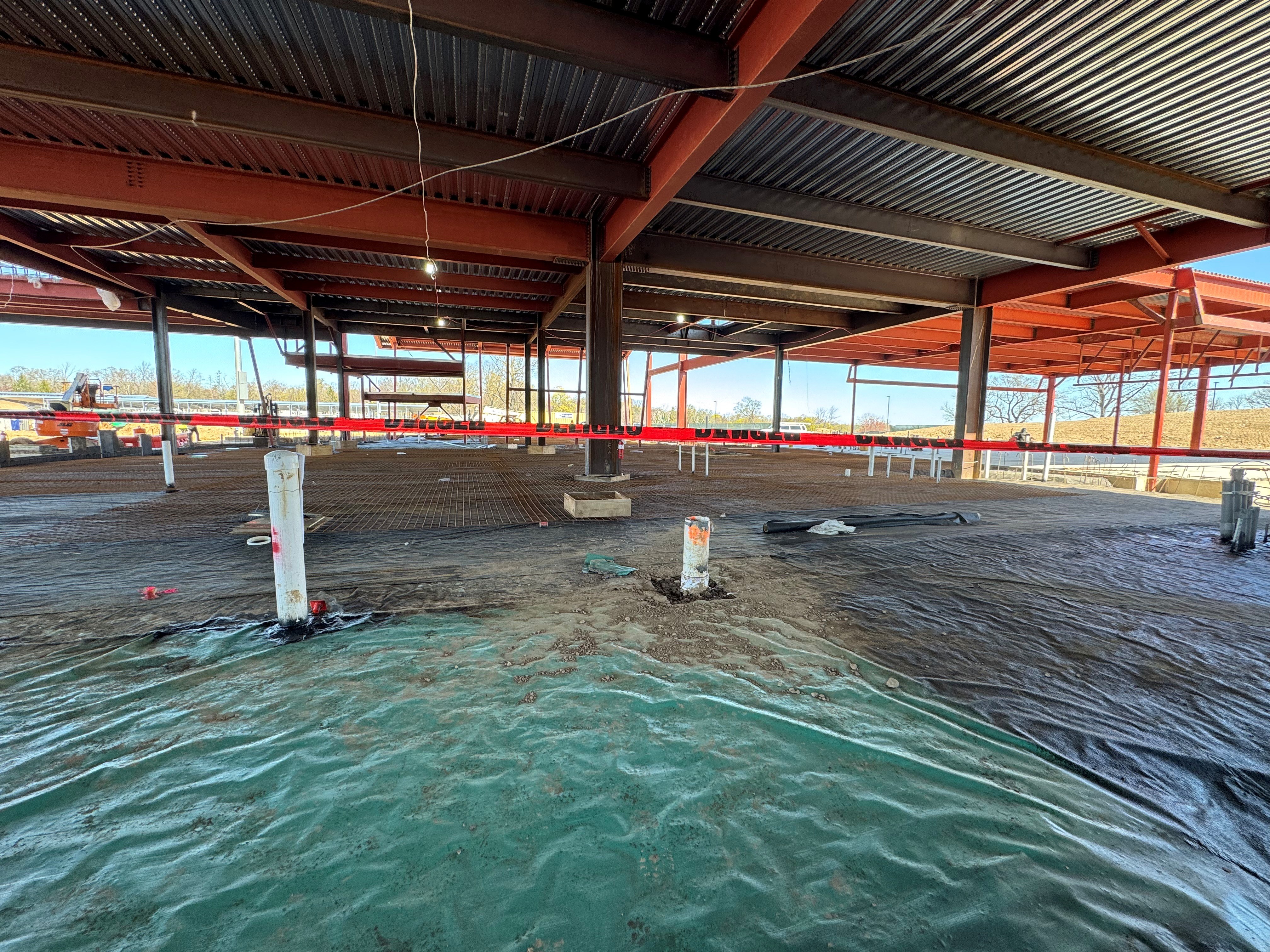Vapor intrusion is an important concern for building envelope consultants and construction professionals, making it critical to stay current on mitigation strategies, regulatory expectations, and effective product solutions that meet performance and compliance needs.
For building envelope and construction professionals, vapor intrusion mitigation is a necessary component of responsible, compliant development.

Trends in Vapor Intrusion Mitigation
Recently, within the field of vapor intrusion mitigation, we have seen the introduction of smarter, integrated systems, such as sub-slab depressurization systems (SSDS) equipped with real-time monitoring and automated alerts.
There is also a growing emphasis on sustainability. Design and engineering professionals are seeking solutions that align with green building standards like LEED and WELL, including the use of low-VOC materials and energy-efficient components.
Vapor intrusion is also now a standard consideration in environmental due diligence. It has become a regular component of Phase I and Phase II Environmental Site Assessments (ESAs) and is often required in remediation and redevelopment plans. As a result, construction professionals need to be prepared to address VI issues from the outset of any project.
Increasingly, VI mitigation is being addressed early in the design and construction process rather than as a retrofit, especially in brownfield redevelopment projects. This proactive approach simplifies permitting, improves performance outcomes, and reduces long-term costs. Additionally, the industry is moving toward site-specific, risk-based solutions that consider building design, contaminant type, and occupancy. Advanced modeling tools are also being used to tailor mitigation plans to each project’s unique characteristics.

Understanding the Regulatory Landscape
Regulatory guidance in the U.S. is grounded in the EPA’s document, '2015 OSWER Technical Guide for Assessing and Mitigating the Vapor Intrusion Pathway from Subsurface Vapor Sources to Indoor Air’ (source https://www.epa.gov/sites/default/files/2015-09/documents/oswer-vapor-intrusion-technical-guide-final.pdf)
While not legally binding, this document provides a widely accepted framework that influences state policies.
Additionally, the EPA’s website highlights several research documents “intended for use at any site being evaluated by EPA pursuant to the Comprehensive Environmental Response, Compensation, and Liability Act (CERCLA), as amended, or the corrective action provisions of the Resource Conservation and Recovery Act (RCRA), as amended; they are also intended for use by EPA’s brownfield grantees, or state agencies acting pursuant to CERCLA or an authorized RCRA corrective action program where vapor intrusion may be of potential concern.” They can be accessed here: https://www.epa.gov/vaporintru...
The 2015 technical guide provides detailed comparisons across states and the District of Columbia, including screening values for priority vapor intrusion chemicals, key triggers for investigation, and mitigation standards. The analysis reveals significant variability in regulatory frameworks across jurisdictions— as of this writing, there is no national consensus—making it challenging for professionals to apply a uniform approach across multiple states.
Yet the landscape is shifting: The February 2024 update to Haley & Aldrich’s paper “Overview of State Approaches to Vapor Intrusion: 2023 Update” ((source) reports that 30 states have issued new or revised vapor intrusion (VI) guidelines since the prior comprehensive review in 2018, highlighting significant regulatory activity at the sub‑federal level. These updates encompass key elements such as lateral and vertical exclusion distances, attenuation factors, screening values for contaminants like chlorinated solvents and petroleum hydrocarbons, and protocols for assessing preferential pathways (like sewers). The following summarizes key concepts:
- Screening values: Many states have revised the chemicals and concentration thresholds used to trigger VI investigations.
- Investigation procedures: Guidance now reflects more nuanced recommendations for sampling, attenuation factors, and preferential pathway management.
- Mitigation standards: New or updated criteria have been introduced for designing, implementing, and verifying vapor mitigation systems.
- Regulatory diversity: The review highlights a broad variation across jurisdictions—in terms of how screening levels, decision-making flowcharts, and mitigation triggers are defined—creating challenges for those operating across state lines
Notably, most states set lateral exclusion thresholds around 100 ft and adopt US EPA‑consistent subsurface‑to‑indoor air attenuation factors (typically 0.03 for soil gas and sub‑slab gas, and 0.001 for groundwater.) However, states still differ widely in numeric values, lines‑of‑evidence frameworks, and mitigation triggers—reflecting a fragmented landscape in vapor intrusion regulation. In part II of this series, we will dive into those.
